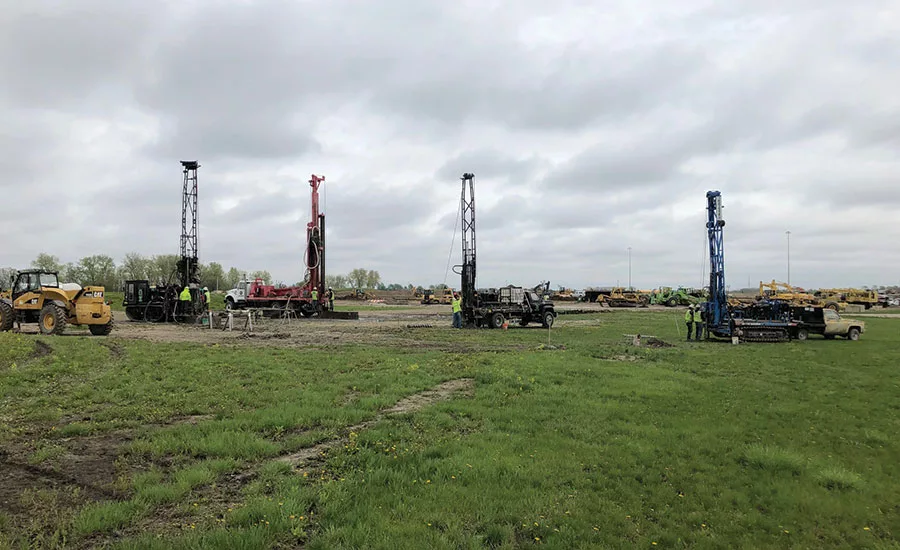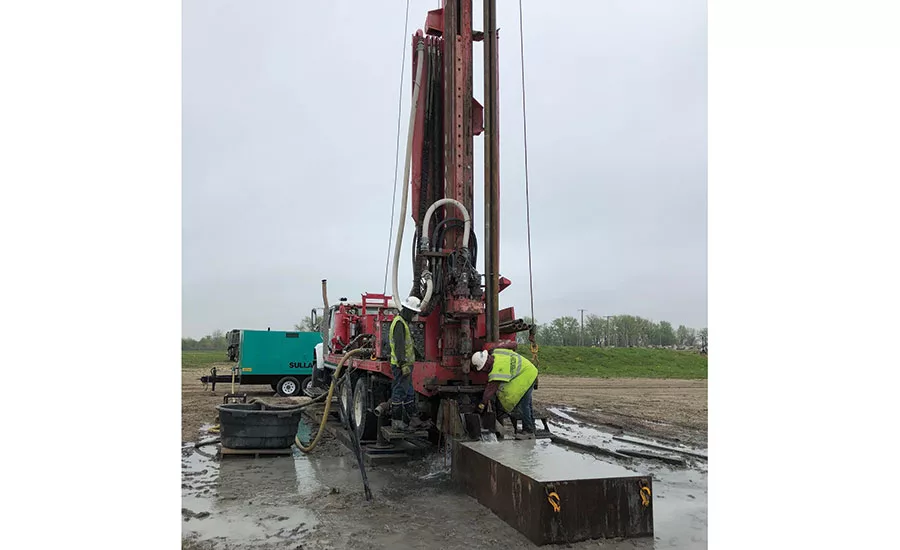Do you Know What Motivates Your Drilling Crews?

Set up is underway for a recent apprenticeship training through the Local 150 AFL-CIO, Apprentice and Skill Improvement Program.
Source: Dave Bowers photos

Sassy has lived up to her name in training. People, of course, aren’t dogs. But, like dogs, people do respond to incentives.

Apprenticeship training helps pair workers, who already know the demands and expectations of a job, with employers ready to invest in crews and grow their businesses.
Something happened the other day that got me thinking about training. As an instructor, I thought I understood training. Over my years as an instructor I have dealt with a couple of challenging students, but every one of them has been able to succeed with a little effort on both our parts.
This brings me to my issue: My family decided that our dog was getting older and could benefit from having a younger dog as a companion to help keep her feeling young. We searched and found a year-old hound named Sassy. (The name should have been the first indication that we were in for a challenge.) We temporarily fostered this dog in the hopes of eventually adopting her.
Our current dog is a hound and I have trained a few dogs in my day so, after talking with my wife, we felt we were up to the challenge a hound can present in training. I can honestly say that Sassy may be one of the smartest dogs I have ever worked with, and she is easily motivated by a simple food-based reward. That does not mean she is easy to train. She will respond to you if she knows there is something in it for her and, if you do not have the right reward, she will show obstinacy. I liken her to a super model: She is beautiful, but if you have nothing that she values, no amount of praise or petting will do the trick.
So how does this relate to drilling?
Company owners are motivated by profits. Workers are motivated by feelings of self-worth and an ability to feed their family. How do we reconcile those two to provide both groups with what motivates them? My answer to both is similar.
To the worker, are you hard-enough working and well-enough trained to make money for your contractor at a higher labor rate? After all, if the contractor doesn’t make money there is no job to have. To the contractor, are you doing everything you can to make your employees feel valued? This includes safety training, mentoring, providing the safest equipment possible, sending them to industry conferences and offering a path to becoming a licensed professional.
Contractors may wonder how they could afford to pay the higher cost of all this. The productivity of your workforce will increase as you implement the measures that make them feel more valued. Conversely, a recent IBM study found that employees who feel they cannot develop in the company and fulfill their career goals are 12 times more likely to leave a company. One of the biggest reasons that employees leave their jobs is because they see no future with their current employer. There goes all the time and effort you made as owner of a company to get them up to speed. What is the cost in time and money of finding a replacement and getting them jobsite ready? We in the drilling industry have a bad habit of providing a job instead of offering a career.
When employees feel empowered, they are less likely to leave, more productive, safer and better coworkers. Empowered employees are happier, and studies have found as much as a 12 percent spike in productivity when employees are happy. I know this is a little touchy feely for many drillers, but emotion matters to the younger generations. You work better when you are happy. I work better when I’m happy. So why not take steps to boost you employee’s morale?
“Employees are a company’s greatest asset ... make them feel that they are an integral part of the company’s mission.”
– Anne M. Mulcahy,
former CEO & chairwoman of Xerox Corp.
Contractors in my area pay into a training fund that provides their employees with all types of safety and job-related training at no cost to the employee. This also provides entry-level employees to companies with a level of training not attainable any other way. Applicants attend a two-week evaluation targeted toward learning the basics of the drilling industry and assessing the applicant’s aptitude for this industry. Part of this is an evaluation of whether the applicant seems as if he or she would be happy doing this type of work. As a result, the contractor gets an engaged new apprentice who knows the types work he or she is going to be doing, has been trained and demonstrated safe work practices. The employee gets the feeling they are entering a long-term career. The journeywork has any training he or she could want. The driller has a greater chance of working with a helper who wants to learn and is motivated to do the best job possible. As a result, productivity is enhanced.
These are the ways we motivate in the area I am in, but of course there are other ways to motivate workers to be safer and more productive. I would love to hear how you approach employee well-being and, if you do not currently have a plan, make one.
I’ll leave readers with this thought from Anne M. Mulcahy, the retired CEO and chairwoman of Xerox Corporation:
Click here to find more business tips for drilling contractors!
“Employees are a company’s greatest asset — they’re your competitive advantage. You want to attract and retain the best; provide them with encouragement, stimulus, and make them feel that they are an integral part of the company’s mission.”
So, what are you doing to help employees, from the back office to the jobsite, feel they’re part of your company’s mission?
Looking for a reprint of this article?
From high-res PDFs to custom plaques, order your copy today!




